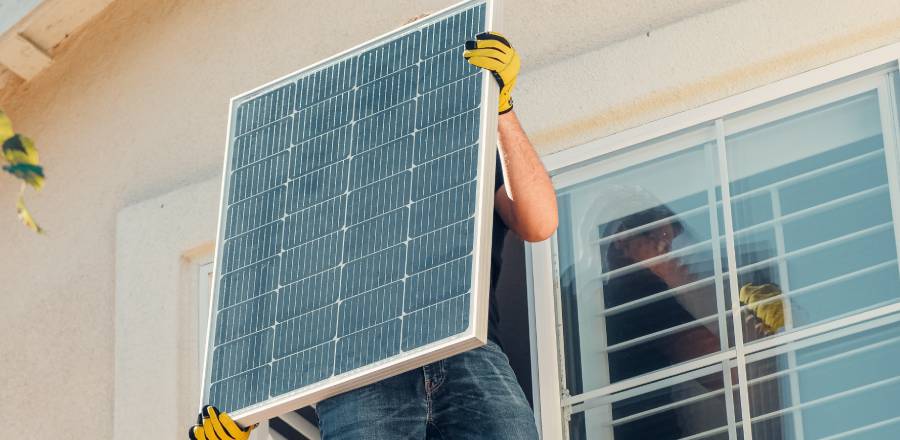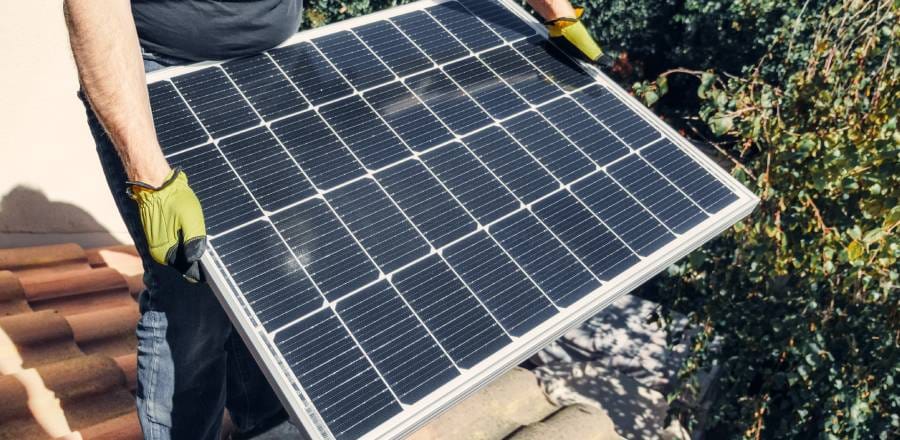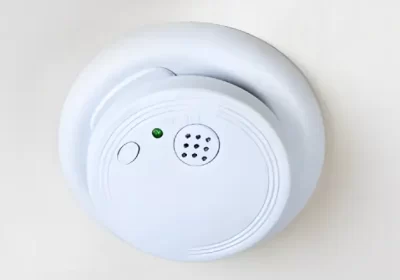If you’re looking to harness the power of the sun and save some money on your electricity bill, you might be interested in building your own solar panel. With a few simple materials and a bit of know-how, you can make a solar panel with aluminum foil that will produce clean, renewable energy for your home. In this article, we’ll walk you through the process of building your own solar panel step by step.
Table of Contents
How to Make a Solar Panel with Aluminum Foil: An Easy DIY Guide
Materials You’ll Need
Before we get started, here’s a list of materials you’ll need to make a solar panel with aluminum foil:
- A piece of cardboard or foam board
- Aluminum foil
- Glue
- Scissors
- Copper wire
- Multimeter
- Alligator clips
- A solar cell
Step-by-Step Guide
Now that you have all the necessary materials, it’s time to get started on building your solar panel.
Step 1: Cut the Cardboard
First, cut the cardboard or foam board to the size you want your solar panel to be. Make sure it’s large enough to fit the solar cell, but not too big that it won’t fit on your roof.
Step 2: Cover with Aluminum Foil
Cover the cardboard or foam board with aluminum foil. Make sure to use enough foil to completely cover the surface, but not too much that it’s too heavy. Glue the foil to the cardboard or foam board.
Step 3: Attach Copper Wire
Take the copper wire and strip off the insulation from both ends. Bend the wire into a U-shape and attach one end to the solar cell and the other end to the aluminum foil on the cardboard. Make sure to use glue to hold the wire in place.
Step 4: Connect to the Multimeter
Connect the alligator clips to the ends of the copper wire and connect them to the multimeter. The multimeter will show you the voltage output of the solar panel.
Step 5: Test Your Solar Panel
Place the solar panel in direct sunlight and check the multimeter to see if it’s producing electricity. You can also use the solar panel to charge a battery or power a small device.

How to Make a Solar Panel with Household Items
If you’re looking for a fun and educational project that can help you save money on your energy bill, building a solar panel with household items is a great option. You don’t need any special equipment or technical skills, just a few common household items and some basic knowledge of electronics. In this article, we’ll walk you through the process of building a solar panel using items you might already have lying around your home.
Materials You’ll Need
Before we get started, here’s a list of materials you’ll need to make a solar panel with household items:
- A piece of plywood or cardboard
- Two sheets of copper flashing
- Salt water
- A stove or hot plate
- A plastic container
- Alligator clips
- A voltmeter
- Some sandpaper or a wire brush
Step-by-Step Guide
Now that you have all the necessary materials, it’s time to get started on building your solar panel.
Step 1: Cut the Base
First, cut your piece of plywood or cardboard to the size you want your solar panel to be. This will be the base for your solar panel.
Step 2: Clean the Copper Flashing
Using some sandpaper or a wire brush, clean the copper flashing until it’s shiny and free of any dirt or oxidation. Cut two pieces of copper flashing to fit the size of your plywood or cardboard base.
Step 3: Heat the Copper Flashing
Place one of the pieces of copper flashing on the stove or hot plate and heat it until it turns black. This process is called “oxidizing” the copper, and it will help create a layer of cupric oxide on the surface of the copper that will act as the solar cell. Be careful not to burn the copper, and make sure to do this step in a well-ventilated area.
Step 4: Rinse with Salt Water
Once the copper is black, rinse it with salt water to remove any excess black oxide. Mix salt and water in the plastic container until the salt is fully dissolved. Place the blackened copper in the salt water and watch as the cupric oxide layer forms. This process is called “electrolysis” and it will create a p-type semiconductor layer on the surface of the copper that will help generate electricity when exposed to sunlight.
Step 5: Connect the Alligator Clips
Using the alligator clips, connect the two pieces of copper flashing together with the plywood or cardboard in between. The blackened copper will be the positive (+) electrode, and the clean copper will be the negative (-) electrode.
Step 6: Test Your Solar Panel
Using the voltmeter, test your solar panel by placing it in direct sunlight. You should see a voltage reading on the voltmeter, indicating that your solar panel is generating electricity.

How to Make a 12V Solar Panel at Home
If you’re interested in generating your own electricity and reducing your energy bills, building a 12V solar panel at home is a great way to start. With a few basic materials and some simple tools, you can create a solar panel that can generate clean, renewable energy for your home. In this article, we’ll walk you through the process of building a 12V solar panel step by step.
Materials You’ll Need
Before we get started, here’s a list of materials you’ll need to make a 12V solar panel:
- Solar cells (6V or 12V)
- Tabbing wire
- Flux pen
- Soldering iron
- Solder wire
- Bus wire
- Diode (rated for at least 3A and 20V)
- Junction box
- Drill
- Silicone sealant
- Mounting brackets
- Aluminum frame
- Plexiglas or tempered glass
Step-by-Step Guide
Now that you have all the necessary materials, it’s time to get started on building your 12V solar panel.
Step 1: Connect the Solar Cells
Using the tabbing wire and flux pen, connect the solar cells in series to create a 12V solar panel. Make sure to solder the connections between the cells securely and use the flux pen to prevent any oxidation.
Step 2: Attach the Bus Wire
Using the bus wire, attach the positive and negative leads to the solar cells. Make sure to use the correct polarity and solder the connections securely.
Step 3: Install the Diode
Attach the diode to the positive lead of the solar panel using the soldering iron and solder wire. This will prevent the solar panel from discharging the battery at night.
Step 4: Install the Junction Box
Using the drill, create a hole in the back of the junction box and feed the wires through. Attach the wires to the diode and the bus wire, and secure the junction box to the back of the solar panel using the silicone sealant.
Step 5: Mount the Solar Panel
Using the mounting brackets, attach the solar panel to the aluminum frame. Make sure to use the correct hardware and tighten the brackets securely.
Step 6: Cover the Solar Panel
Cover the solar panel with plexiglas or tempered glass to protect the solar cells from the elements. Make sure to use a silicone sealant to create a watertight seal between the cover and the aluminum frame.
Step 7: Test Your Solar Panel
Using a voltmeter, test your solar panel by placing it in direct sunlight. You should see a voltage reading of around 12V, indicating that your solar panel is generating electricity.
How to Make Homemade Solar Panels for Free
Solar energy is a renewable source of energy that is becoming increasingly popular as people look for ways to reduce their reliance on fossil fuels. However, solar panels can be expensive, and not everyone can afford to purchase them. Fortunately, there are ways to make homemade solar panels for free using recycled or repurposed materials. In this article, we’ll walk you through the process of making homemade solar panels step by step.
Materials You’ll Need
Before we get started, here’s a list of materials you’ll need to make homemade solar panels:
- Used or broken solar cells
- Tabbing wire
- Flux pen
- Soldering iron
- Solder wire
- Bus wire
- Plywood or foam board
- Plexiglas or tempered glass
- Screws
- Mounting brackets
- Silicone sealant
- Paint
Step-by-Step Guide
Now that you have all the necessary materials, it’s time to get started on making your homemade solar panels.
Step 1: Gather Solar Cells
Start by gathering used or broken solar cells. You can find these online or by contacting local solar panel installers. Make sure the cells are not cracked or damaged.
Step 2: Clean the Solar Cells
Using a mixture of water and vinegar, clean the solar cells to remove any dirt or grime. Dry the cells thoroughly before proceeding.
Step 3: Connect the Solar Cells
Using the tabbing wire and flux pen, connect the solar cells in series to create a solar panel. Make sure to solder the connections between the cells securely and use the flux pen to prevent any oxidation.
Step 4: Attach the Bus Wire
Using the bus wire, attach the positive and negative leads to the solar cells. Make sure to use the correct polarity and solder the connections securely.
Step 5: Install the Solar Panel
Attach the solar panel to a piece of plywood or foam board using screws and mounting brackets. Make sure to use the correct hardware and tighten the brackets securely.
Step 6: Cover the Solar Panel
Cover the solar panel with plexiglas or tempered glass to protect the solar cells from the elements. Make sure to use a silicone sealant to create a watertight seal between the cover and the plywood or foam board.
Step 7: Paint the Solar Panel
Paint the solar panel with a light color to reflect sunlight and reduce heat absorption. This will help improve the efficiency of the solar panel.
Step 8: Test Your Solar Panel
Using a voltmeter, test your solar panel by placing it in direct sunlight. You should see a voltage reading, indicating that your solar panel is generating electricity.
How to Make a Solar Panel Out of Recycled Materials
As the world becomes increasingly aware of the importance of sustainability, more and more people are looking for ways to reduce waste and reuse materials. If you’re interested in renewable energy, building a solar panel out of recycled materials is a great way to combine sustainability and clean energy. In this article, we’ll walk you through the process of making a solar panel out of recycled materials step by step.
Materials You’ll Need
Before we get started, here’s a list of materials you’ll need to make a solar panel out of recycled materials:
- Old or used solar cells
- Aluminum cans
- Tabbing wire
- Flux pen
- Soldering iron
- Solder wire
- Bus wire
- Plywood or foam board
- Plexiglas or tempered glass
- Screws
- Mounting brackets
- Silicone sealant
Step-by-Step Guide
Now that you have all the necessary materials, it’s time to get started on making your solar panel out of recycled materials.
Step 1: Gather Solar Cells
Start by gathering old or used solar cells. You can find these online or by contacting local solar panel installers. Make sure the cells are not cracked or damaged.
Step 2: Clean the Solar Cells
Using a mixture of water and vinegar, clean the solar cells to remove any dirt or grime. Dry the cells thoroughly before proceeding.
Step 3: Connect the Solar Cells
Using the tabbing wire and flux pen, connect the solar cells in series to create a solar panel. Make sure to solder the connections between the cells securely and use the flux pen to prevent any oxidation.
Step 4: Create the Solar Panel Frame
Using aluminum cans, create the frame for the solar panel. Cut the cans to size and attach them to a piece of plywood or foam board using screws and mounting brackets.
Step 5: Attach the Bus Wire
Using the bus wire, attach the positive and negative leads to the solar cells. Make sure to use the correct polarity and solder the connections securely.
Step 6: Install the Solar Panel
Attach the solar panel to the aluminum can frame using screws and mounting brackets. Make sure to use the correct hardware and tighten the brackets securely.
Step 7: Cover the Solar Panel
Cover the solar panel with plexiglas or tempered glass to protect the solar cells from the elements. Make sure to use a silicone sealant to create a watertight seal between the cover and the aluminum can frame.
Step 8: Test Your Solar Panel
Using a voltmeter, test your solar panel by placing it in direct sunlight. You should see a voltage reading, indicating that your solar panel is generating electricity.
FAQs
- Can you make a solar panel with foil?
Yes, you can make a solar panel with aluminum foil, although it may not be as efficient as using other materials. - Can you make a homemade solar panel?
Yes, you can make a homemade solar panel using a variety of materials, including used or broken solar cells, aluminum foil, and recycled materials. - How do you make a solar panel with household items?
To make a solar panel with household items, you can use materials such as aluminum foil, copper wire, and a sheet of glass or plexiglass. There are many tutorials and guides available online that provide step-by-step instructions. - How to make a dummy solar panel?
To make a dummy solar panel, you can use materials such as cardboard or foam board to create a frame and cover it with a sheet of glass or plexiglass. You can also add LED lights to simulate the effect of a real solar panel. - Are DIY solar panels worth it?
DIY solar panels can be worth it for those who have the time and skills to build them. While they may not be as efficient as commercially produced solar panels, they can still provide a significant amount of clean, renewable energy for your home. - Is it cheaper to make your own solar panels?
Making your own solar panels can be cheaper than purchasing them, especially if you have access to recycled or repurposed materials. However, it is important to consider the time and effort required to build a solar panel, as well as the potential risks and safety concerns. It may be worth consulting with a professional to determine the most cost-effective and safe option for your situation.





